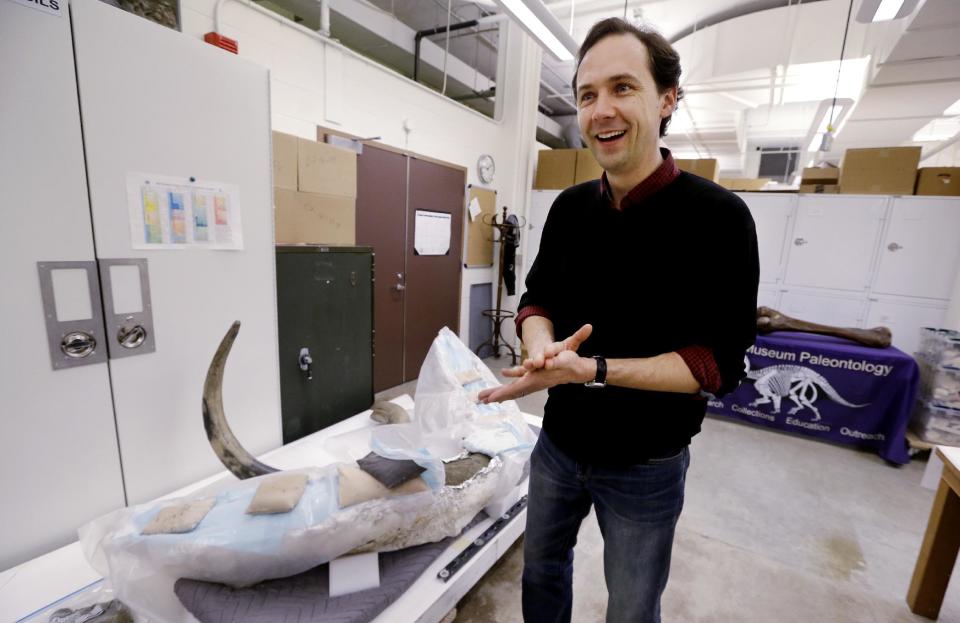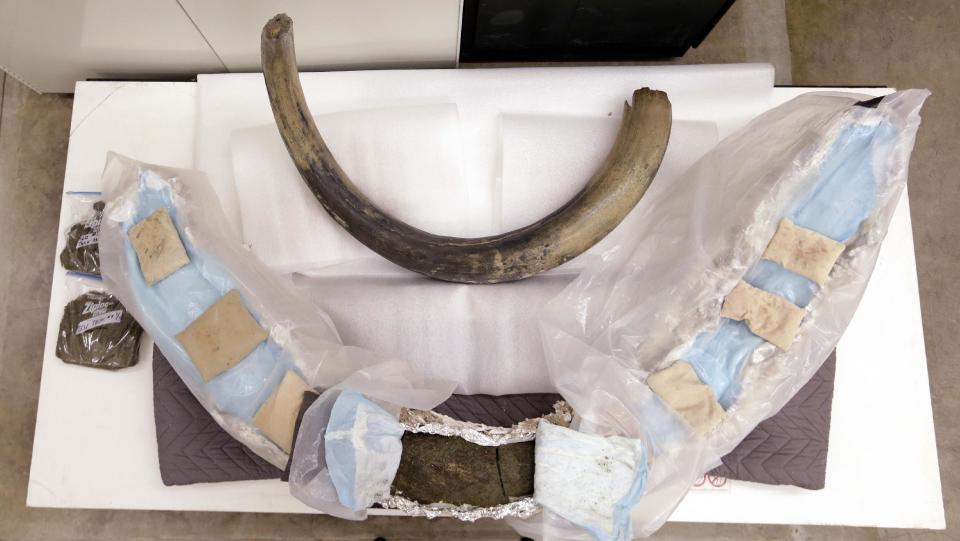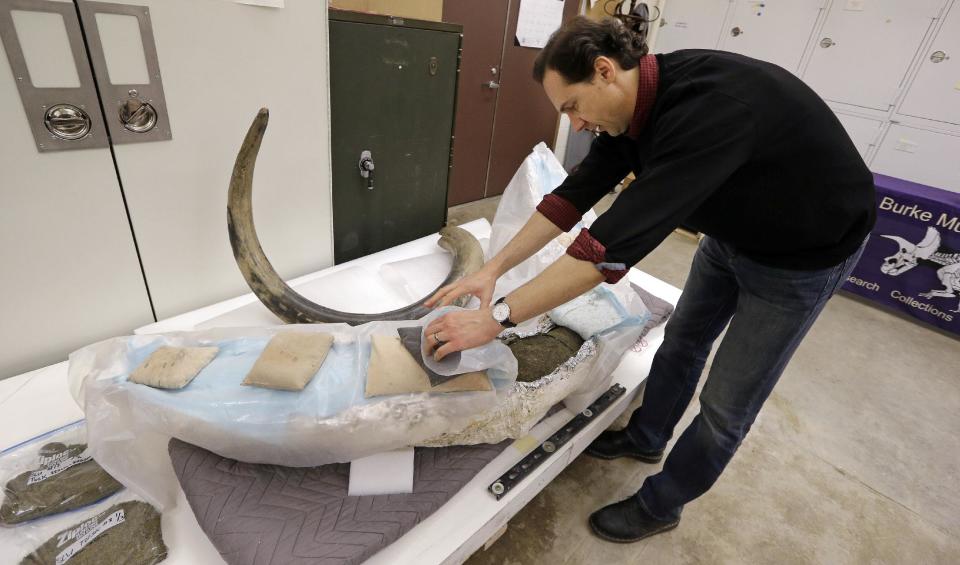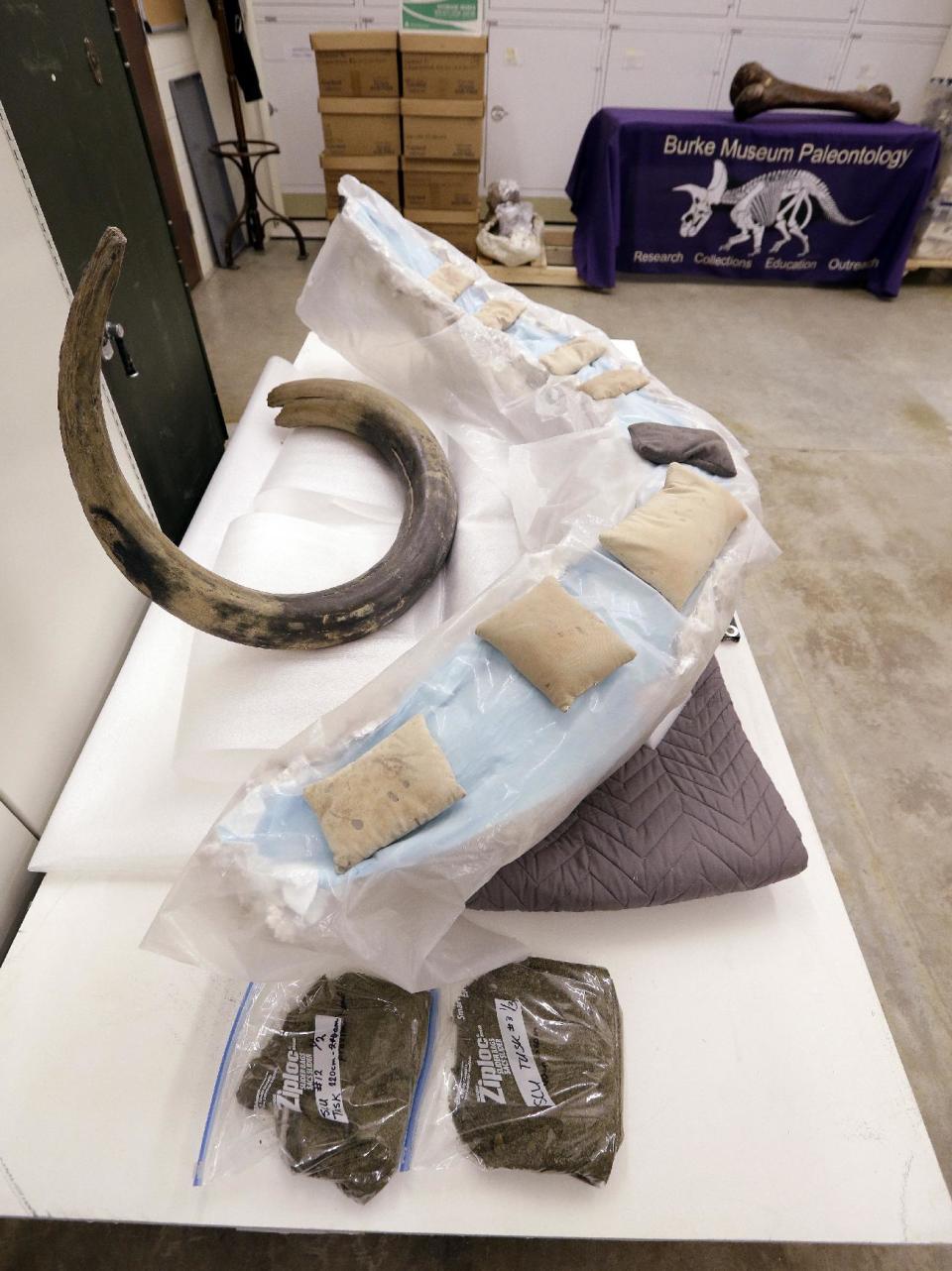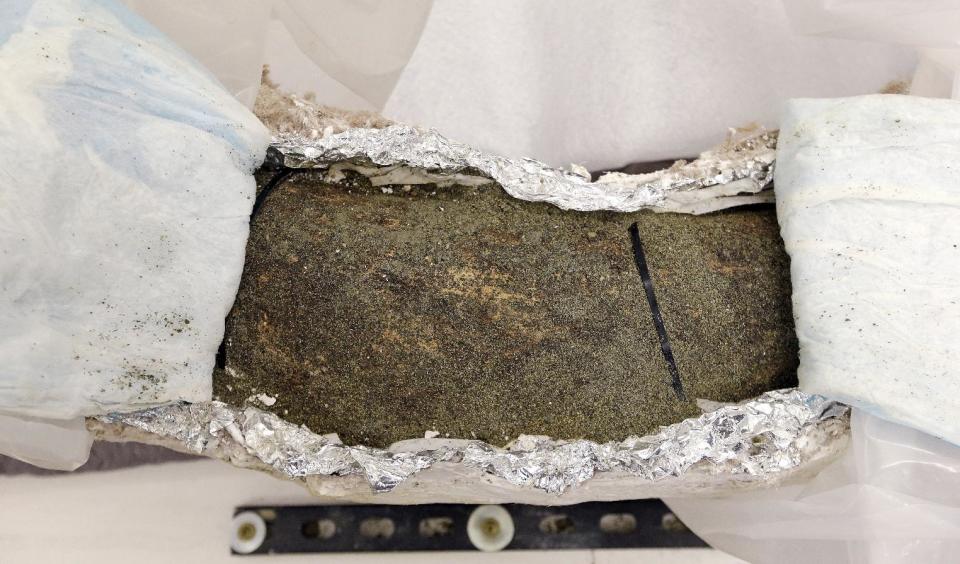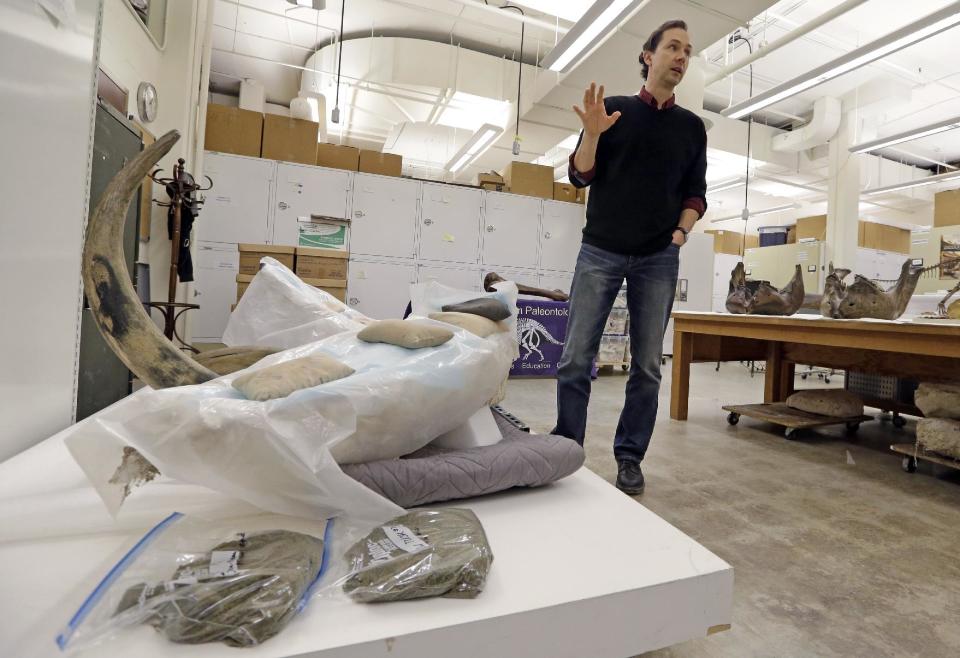DNA could tell story of Seattle mammoth tusk
SEATTLE (AP) — The fossilized mammoth tusk discovered at a Seattle construction site will reveal its age, gender and life story, but probably not for another year, because that's how long it will take scientists to dry out the water-logged and fragile tusk, officials at the Burke Museum said Wednesday.
Thanks to the hints of natural history found in the dirt surrounding the tusk — nearly 100 small bags of dirt containing pollen, a small beetle and plant materials were carted away along with the fossil — scientists hope this discovery will tell them a lot about what Seattle was like before humans ever walked the shores of the Puget Sound.
"This is our means of time travel," said paleontologist Christian Sidor.
The exploration will go further if Sidor is correct and they can scrape some DNA from collagen fibers inside the tusk after it is allowed to harden and stabilize.
The tusk is believed to be of a Columbian mammoth, the Washington state fossil. It measured at 8.5 feet long when it was pulled out of the construction pit on Feb. 14. The tusk, which was about 30 feet below street level, is between 20,000 and 60,000 years old.
Scientists don't know the gender of the mammoth that lost its tusk, which is large for the Seattle collection, but not so large that it definitely came from a male, Sidor said. Mammoth tusks can measure as long as 15 feet. They believe it was the left tusk because of its curve.
The other tusk was likely deposited somewhere else by glaciers moving through the area, and the animal probably died somewhere else, Sidor said. The rest of the skeleton was scavenged.
"The other one was there at some point," he said. "Fossil records are rarely complete."
DNA will tell scientists the genetics and gender of the mammoth. DNA won't reveal if fossils found at other Seattle construction sites came from the same animal. And it won't be detailed enough to fulfill the dreams of some amateur scientists who would like to see clones of ancient animals brought to life.
Scientists will use carbon dating to determine how long ago the animal died. Other geochemical analysis may determine what plants the mammoth ate.
The tusk will have age rings similar to a tree trunk to tell scientists how long it lived, and other markings on the fossil may show whether the mammoth had battle experience.
"You can do amazing things with these tusks," Sidor said. "These fossils bring these animals to life."
The public won't have to wait a year to get their first glimpse of the tusk, which resembles a large, smooth piece of driftwood covered in wet sand.
The drying process won't require the museum to keep it hidden away in the basement. The mammoth tusk will have its public debut — wrapped in its plaster cast like a giant arm — on March 8 at the Seattle museum's "Dino Day" celebration.
"We're making an exception so that the mammoth can come to Dino Day," Sidor said with a smile. For those who may not have gotten the joke: Mammoths and dinosaurs did not roam the earth at the same time.
Paleontology jokes are popular in Seattle and on social media these days. A Twitter personality claiming to be a local mammoth that lost its tusk will be among the judges of a contest to name the fossil, museum spokeswoman Alaina Smith said.
It is the largest tusk in the museum's collection.
